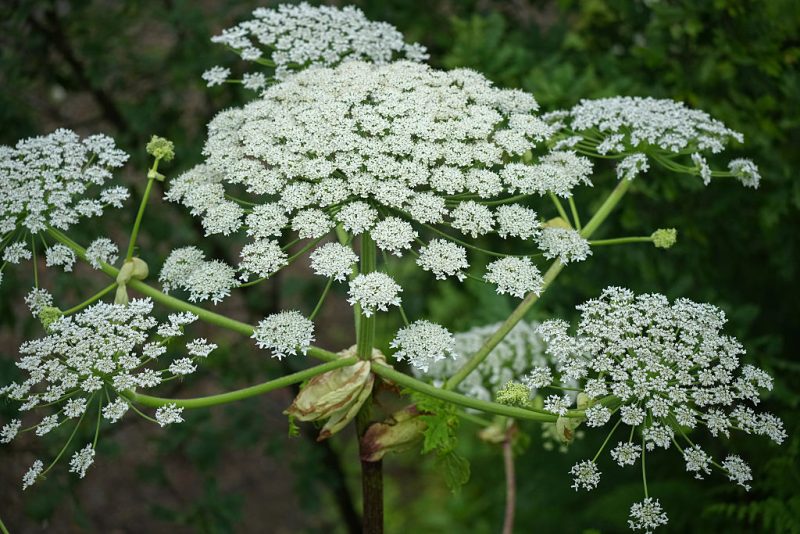Understanding the Threat of Giant Hogweed
The term “weed” is often used to describe any plant that grows where it’s not wanted. However, some plants are classified as noxious weeds due to their potential to cause harm. The federal definition of a noxious weed, according to the Plant Protection Act, includes any plant or plant product that can directly or indirectly injure or cause damage to crops, livestock, poultry, or other agricultural interests, as well as public health and the environment.
One such plant that falls under this category is giant hogweed, a particularly dangerous species that may be growing in your backyard without you even realizing it. This plant has been present in the United States for over a century and is now found in multiple states across the country.
Origins and Spread of Giant Hogweed
Native to parts of Asia, researchers believe that giant hogweed was likely introduced to the U.S. as an ornamental garden plant due to its impressive size and striking flowers. It’s also possible that its seeds were brought in through spice imports from the Middle East. Regardless of how it arrived, giant hogweed has since spread throughout various regions, including states like Connecticut, Illinois, Indiana, Maine, Maryland, Massachusetts, Michigan, Minnesota, New Hampshire, New Jersey, New York, Ohio, Oregon, Pennsylvania, Vermont, Virginia, Washington, and Wisconsin.
This perennial plant can grow up to 20 feet tall, with massive umbrella-like flowers that bloom between May and July. The flowers can reach diameters of up to 2.5 feet, while the stems and stalks can be as thick as 4 inches. These stems have distinctive purplish-red blotches and stiff hairs, and the leaves have toothed edges that can grow up to 5 feet wide.
Distinguishing Giant Hogweed from Similar Plants
Giant hogweed is often mistaken for cow parsnip, a native plant that can also appear quite tall with white flower heads and wide leaves. However, there are notable differences between the two. Cow parsnip typically reaches about 6 feet in height, with flowers that are roughly a foot in diameter and leaves that are around 2 feet wide—half the size of giant hogweed. Additionally, cow parsnip does not have the purple blotches on its stems that are characteristic of giant hogweed.
Despite these differences, both plants can cause skin irritation. The sap of cow parsnip can lead to a blistery rash, especially for those with sensitive skin. In contrast, the sap of giant hogweed can cause severe burns within a day if it comes into contact with your skin and you are exposed to sunlight. This condition, known as phytophotodermatitis, occurs when chemicals in the plant interact with sunlight, causing severe burning and blistering.
Health Risks and Precautions
Phytophotodermatitis can resemble a sunburn and may develop itchy patches similar to eczema. The condition can last for several months, and treatment usually involves self-care measures such as applying a cool, wet cloth to the affected area. If the sap gets into your eyes, it can lead to temporary or even permanent blindness.
If you come into contact with giant hogweed sap, it’s crucial to wash your skin with soap and water as soon as possible and avoid sunlight. Supervising Park Ranger Chuck Bartlett of Erie County, New York, emphasizes the importance of immediate action to minimize the risk of severe reactions.
Managing Giant Hogweed on Your Property
If you find giant hogweed on your property, managing it depends on the size of the plant. Seedlings or young plants can often be removed by hand, provided you wear protective gear to avoid contact with the sap. Larger plants may need to be cut back before being dug up, and all parts should be bagged and disposed of properly.
Herbicide treatments may also be necessary, and in some cases, assistance from an expert may be required. If you live in a state where giant hogweed has not yet been confirmed, it’s advisable to document any suspected sightings and report them to local agriculture or wildlife officials before attempting removal.
By understanding the risks associated with giant hogweed and taking appropriate precautions, you can help prevent its spread and protect yourself and others from its harmful effects.







